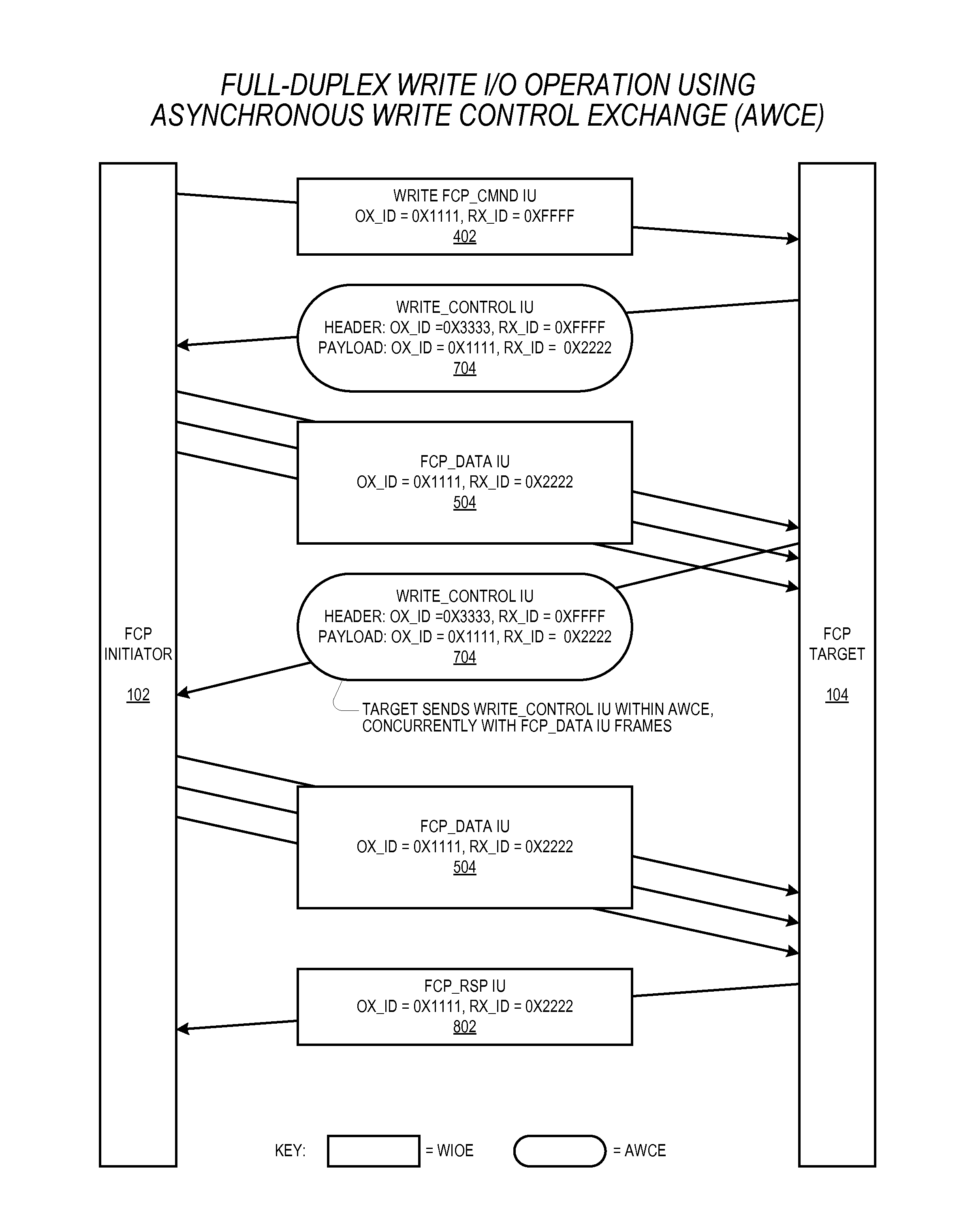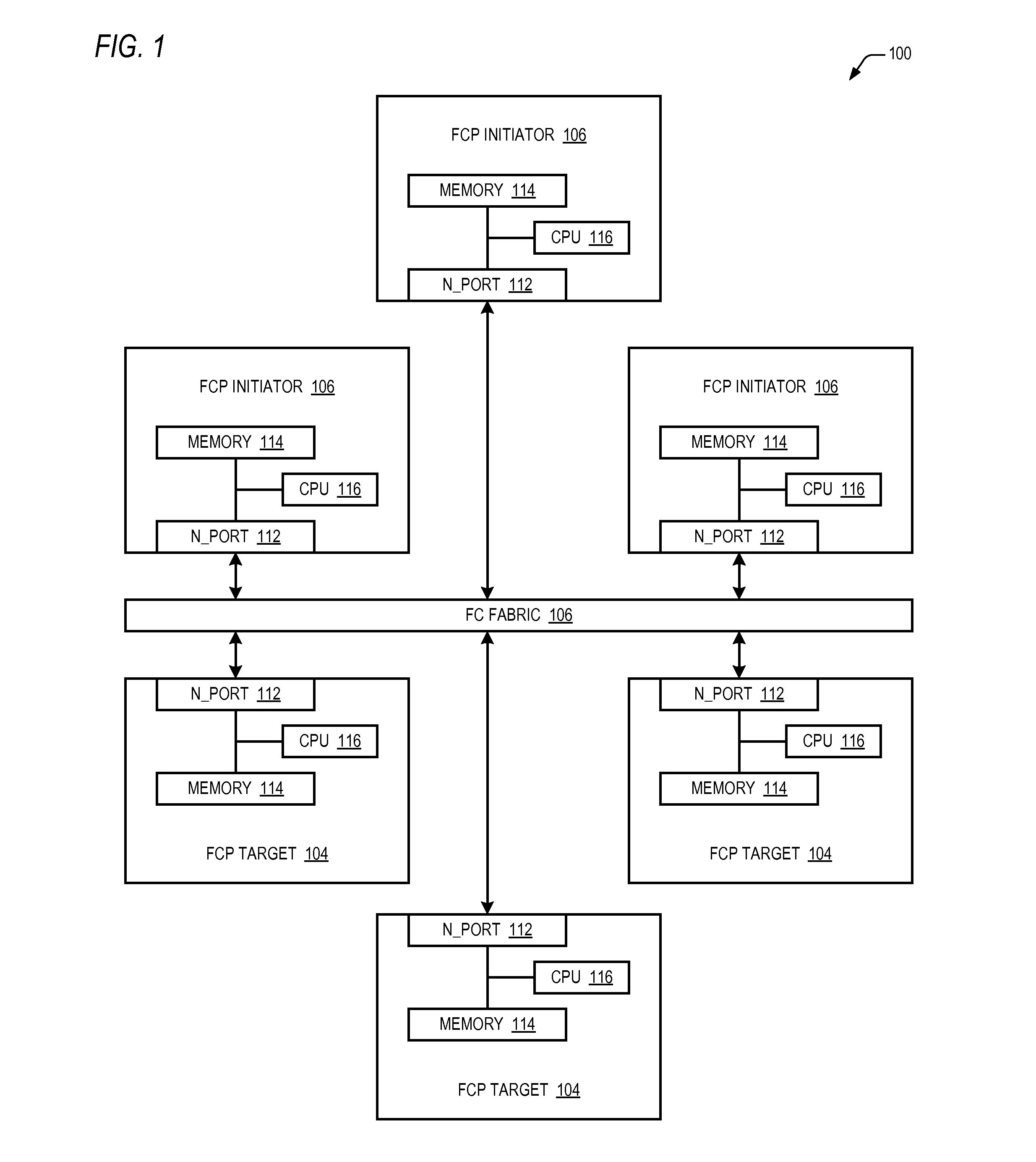Reducing write I/O latency using asynchronous Fibre Channel exchange
a technology of asynchronous fibre channel exchange and write i/o, which is applied in the direction of instruments, input/output to record carriers, computing, etc., can solve the problems of significantly reducing system performance, increasing the latency of introducing latency into fcp write i/o operation, so as to reduce the overall performance of the system and reduce the latency for a single write
- Summary
- Abstract
- Description
- Claims
- Application Information
AI Technical Summary
Benefits of technology
Problems solved by technology
Method used
Image
Examples
Embodiment Construction
Glossary
[0028]A FC port is a FC link control facility (LCF) that includes a transmitter and a receiver for transmitting and receiving Fibre Channel frames on a FC link. A FC port has a distinct address identifier.
[0029]A FC write control information unit (IU) is one or more FC frames sent by a FCP target to a FCP initiator to request a transfer of data associated with a FCP write command received by the FCP target.
[0030]A FC Exchange is the basic mechanism that transfers information consisting of one or more related non-concurrent FC Sequences that may flow in the same or opposite directions. An Originator Exchange_ID (OX_ID) and a Responder Exchange_ID (RX_ID) identify the Exchange. A FC Sequence is a set of one or more FC data frames with a common Sequence_ID (SEQ_ID), transmitted unidirectionally from one FC N_Port to another N_Port.
[0031]A FCP initiator is a FCP node that sends FCP command IUs to a FCP target. An example of FCP an initiator is a FCP host bus adapter.
[0032]FCP ta...
PUM
 Login to View More
Login to View More Abstract
Description
Claims
Application Information
 Login to View More
Login to View More - R&D
- Intellectual Property
- Life Sciences
- Materials
- Tech Scout
- Unparalleled Data Quality
- Higher Quality Content
- 60% Fewer Hallucinations
Browse by: Latest US Patents, China's latest patents, Technical Efficacy Thesaurus, Application Domain, Technology Topic, Popular Technical Reports.
© 2025 PatSnap. All rights reserved.Legal|Privacy policy|Modern Slavery Act Transparency Statement|Sitemap|About US| Contact US: help@patsnap.com



